The world’s best cheesecake might be at this Rome bakery

- Share via
The Syrian table, the closing of Kinn, influencer restaurants and red wine headaches. I’m Laurie Ochoa, general manager of L.A. Times Food, with this week’s Tasting Notes.
You’re reading Tasting Notes
Our L.A. Times restaurant experts share insights and off-the-cuff takes on where they’re eating right now.
You may occasionally receive promotional content from the Los Angeles Times.
The Jewish bakery that takes us through time
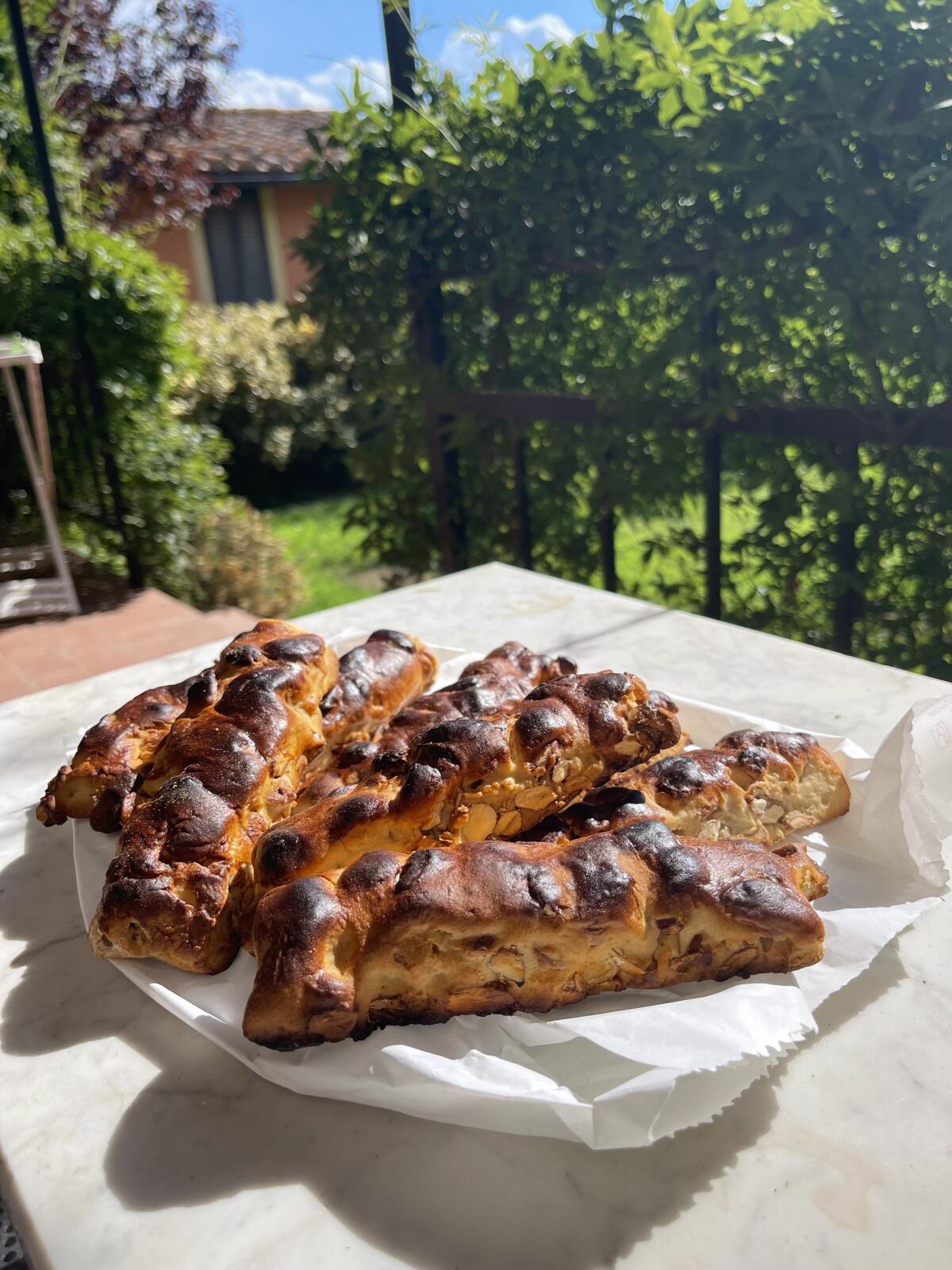
One of my favorite places in the world to walk is Via del Portico d’Ottavia and the offshoot streets and alleyways that make up the heart of Rome’s Jewish quarter. I sometimes park near the Piazza della Consolazione to avoid the restricted-driving zones of the city’s historic center and then make my way to one of the prettiest sections of the Tiber River, where the water flows freely around the Isola Tiberina and under the Ponte Fabricio, Rome’s oldest bridge.
From there it’s a short walk to the Tempio Maggiore, or the Great Synagogue of Rome, and the Museo Ebraico, where you learn about the ghetto conditions forced upon the city’s Jews by Pope Paul IV in 1555, restrictions that lasted until 1870, and how the community was nearly destroyed after the Nazis raided the quarter during World War II and sent most of its inhabitants to concentration camps.
Through it all, however, the neighborhood survived and today is one of the most fascinating sections of the city, in no small part because of the foods that have endured and now represent a link to past generations of Jewish cooks.
The most famous dish, of course, is carciofo alla Giudia, the bronzed fried artichoke that I first tried more than 30 years ago at Piperno on Via Monte Dè Cenci, a restaurant that opened in 1860 when the ghetto restrictions were still in place.
But one of my favorite tastes of the past comes from the tiny bakery Pasticceria Boccione, which opened in 1815. This is where you can get a most unusual cookie, practically unyielding in its hardness and nearly burnt on the outside, filled with candied fruit and nuts. I don’t know if Boccione’s bakers would approve, but I like to dip the cookies in coffee to release their flavor.
Boccione also makes softer sweets, including morning pastries filled with fruit and cream, and its justly famous ricotta crostata, some with a cherry center, others with chocolate. It might be the world’s best cheesecake.
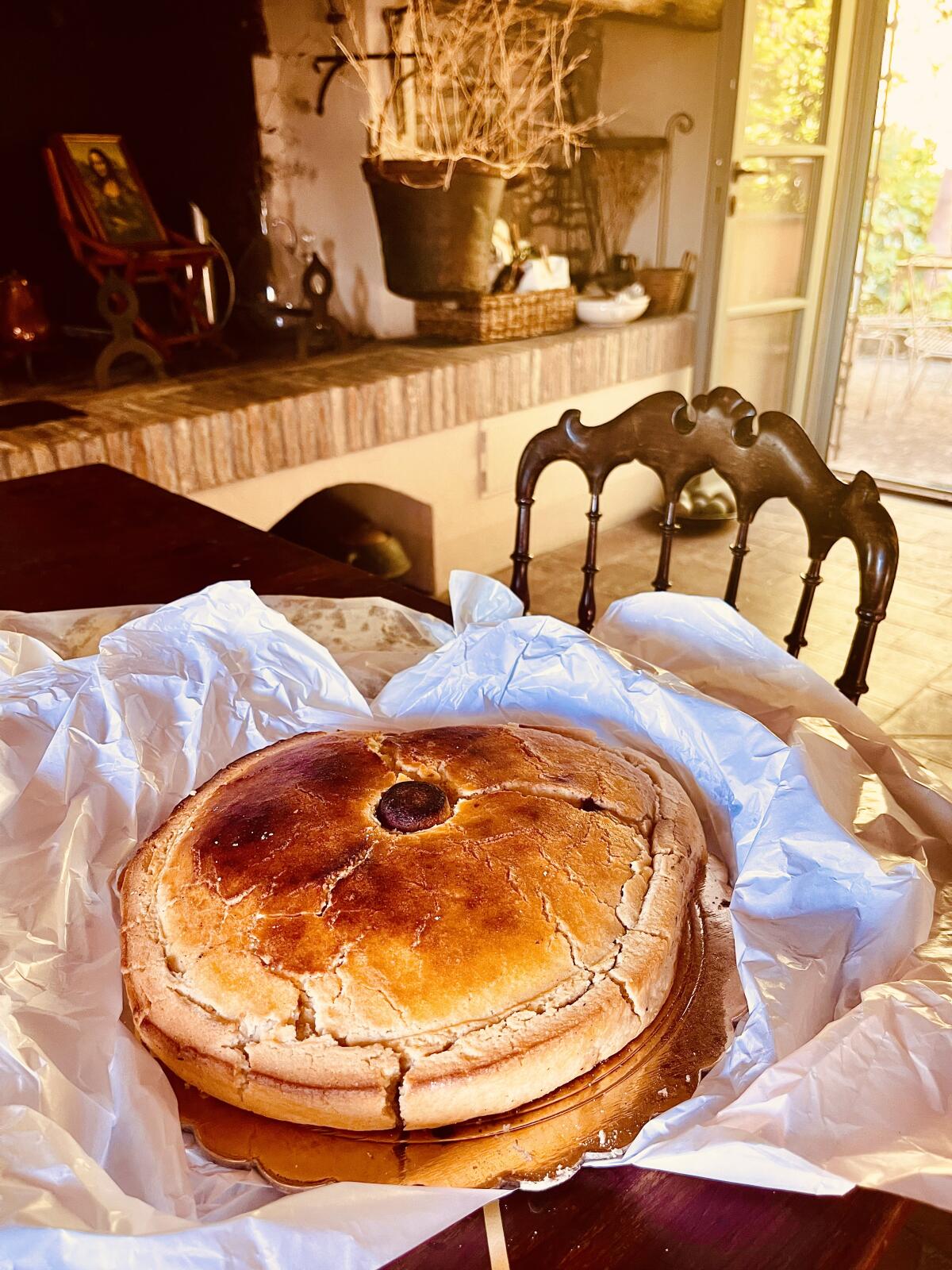
All of this is to say that when deputy food editor Betty Hallock told me that she’d commissioned a Hanukkah feature by Leah Koenig, author of the new cookbook “Portico: Cooking and Feasting in Rome’s Jewish Kitchen,” I was thrilled.
I picked up Koenig’s cookbook on the recommendation of Ken Concepcion at the bookstore Now Serving and love how she broadens the conception of what we think of as Roman Jewish cooking, coming not just from Italian and Sephardic traditions, but Libyan as well. Her Libyan recipe for fried fish with vinegar and onions is well worth making. And I’m looking forward to trying her recipe for Jewish-style pasta Amatriciana, which as our test kitchen coordinator and recipe tester Julie Giuffrida pointed out in our guide to the best cookbooks of 2023, “replaces the guanciale (cured pork cheeks) with cubes of carne secca (beef cured with salt and pepper).”
For our Hanukkah story, Koenig includes a recipe for mele fritte or apple fritters, inspired by a handwritten cookbook by Donatella Limentani Pavoncello called “Dal 1880 ad Oggi: La Cucina Ebraica della Mia Famiglia” (From 1880 to Today: My Family’s Jewish Cuisine). It’s one more way we can connect to the past through food.
A taste of Syria
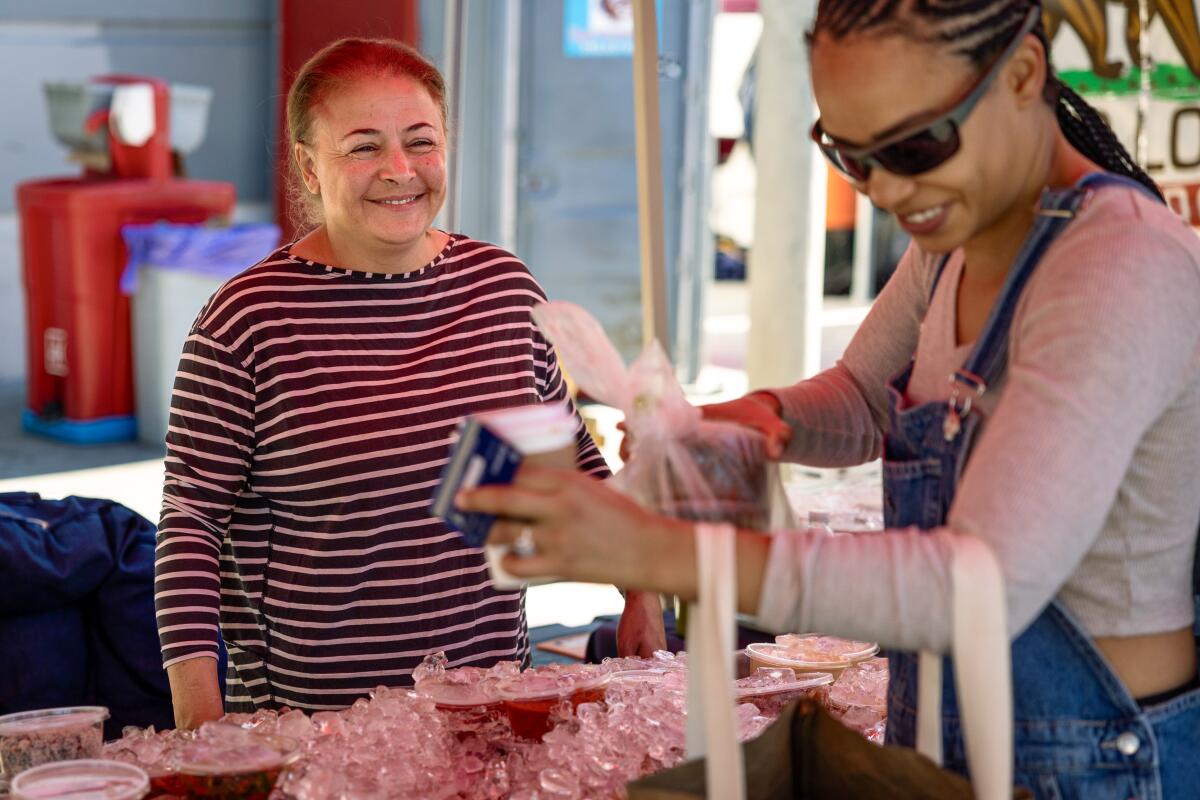
“People sell things we don’t eat or know about in the Middle East. Hummus with avocado — we never eat hummus with avocado, absolutely not,” the proprietor of Mediterranean Pastries Den, a stand that regularly appears at the Mar Vista, Playa Vista and Hermosa Beach farmers markets, told writer Meghan McCarron. “There’s really no representation of the Syrian table, and the diversity of what we eat,”
One striking thing is that Nesrin, the cook and businesswoman behind Mediterranean Pastries Den, could not share her last name for publication “to protect family still in Syria,” she told McCarron.
“When the Arab Spring began,” McCaarron writes, Nesrin, who attended graduate school here, “felt it was her duty to return home to help restore democracy: ‘It was time to help your country when you’re educated and equipped with democratic values.’”
But after the political situation deteriorated in Syria, she found herself an asylum seeker in the U.S.
Many of the foods she sells come from her childhood in Syria, but some are from the broader Arabic table. One dish, for instance, McCarron writes, “is a version of musakhan, sumac chicken baked with onions and spices, which Palestinian chef Reem Asil called ‘perhaps the most iconic of all Palestinian chicken dishes.’”
“The war,” says McCarron, “has brought renewed scrutiny to the hoary cliché that food brings people together, and the intense, almost cruel pressure put onto, say, a bowl of hummus to humanize the people who made it.”
The price our fine dining chefs pay
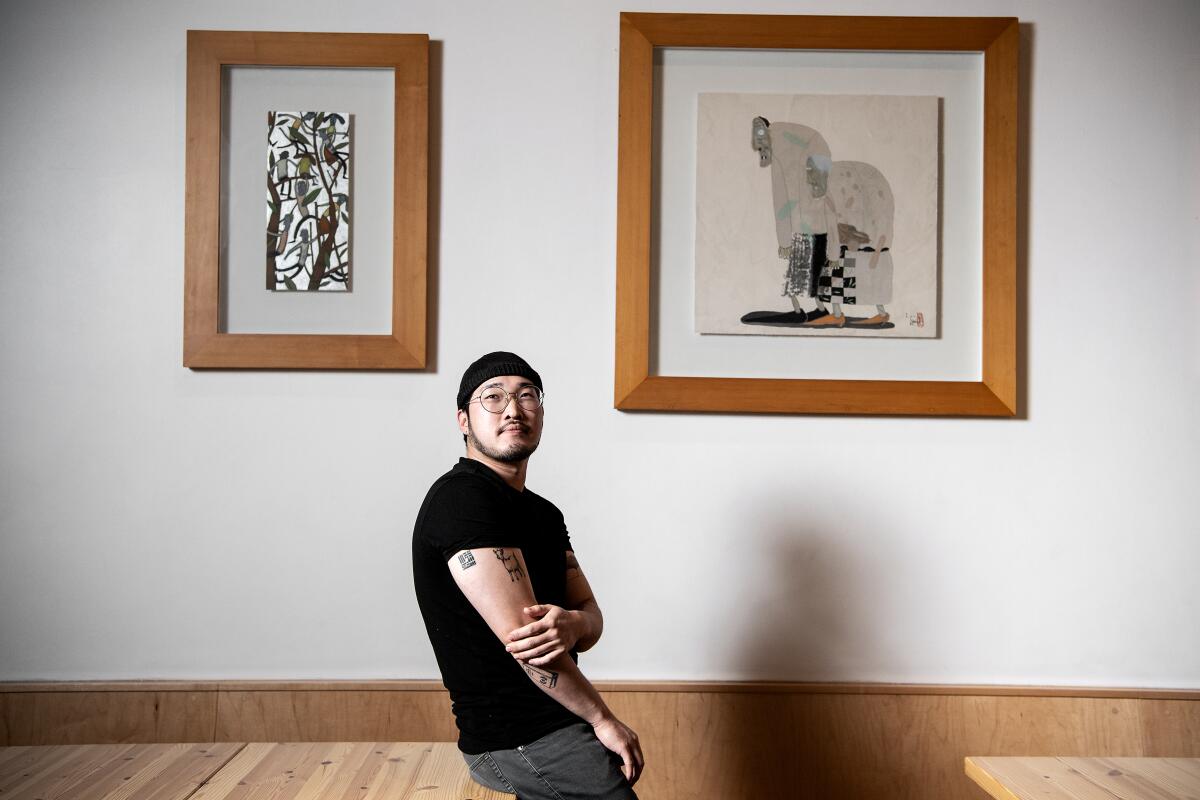
Food reporter Stephanie Breijo spoke in depth with chef Kiyong “Ki” Kim about his decision to close his widely praised Koreatown restaurant Kinn, a place I’ve had some wonderful meals. He talked about how cooking in a small restaurant at such a high level — Times Food critic Bill Addison said Kim’s was “one of the freshest culinary voices in Los Angeles” — takes its toll on a chef’s physical and mental health. “Whether it’s quality of life, financials, sleep hours, we have to please our guests and please our customers rather than making sure we’re staying healthy. It adds up.”
Have a question?
Does an influencer’s fame help or hurt a restaurant?
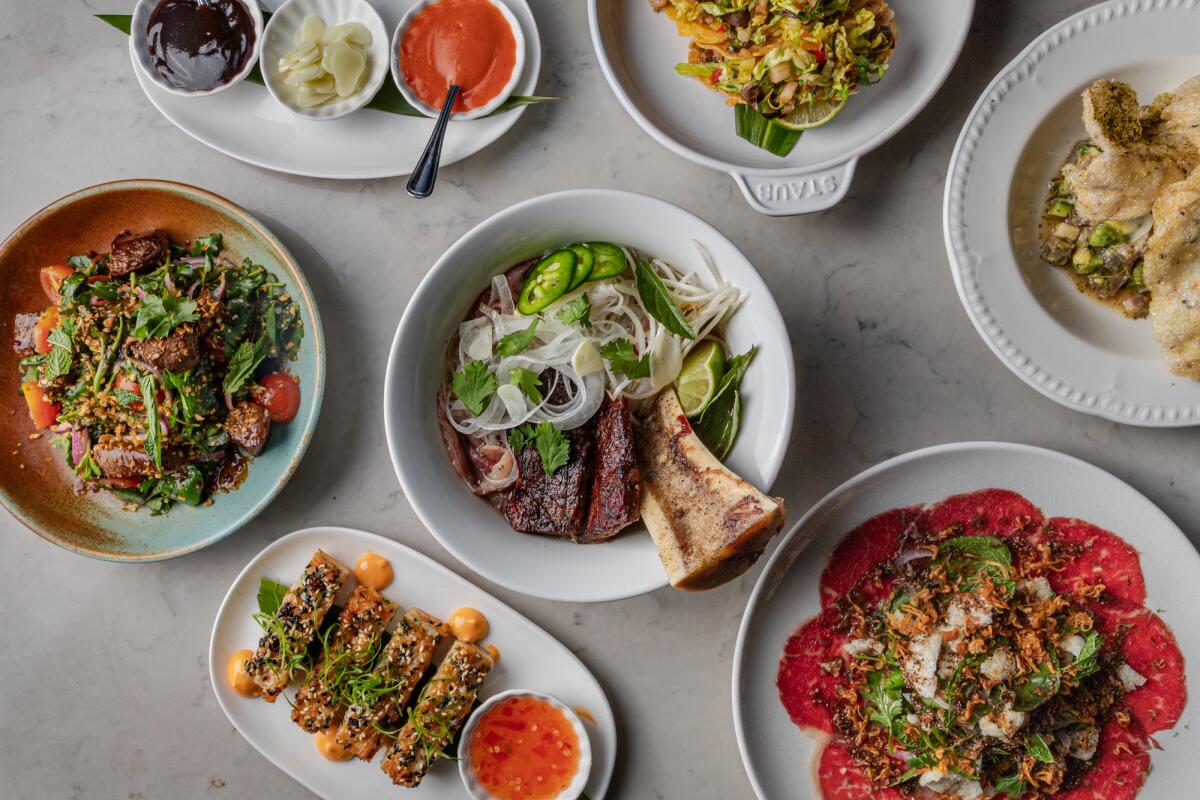
Tiffany Tse takes a look at restaurants opened by social media influencers, a phenomenon similar to restaurants started by Hollywood celebrities and reality TV personalities. Meaning some work while others are overwhelmed by their owners’ notoriety. Consider the cocktail lounge Schwartz & Sandy’s, from “Vanderpump Rules” personalities Tom Schwartz and Tom Sandoval, which experienced “a deluge of negative reviews left by fans angry about Sandoval’s affair with a fellow co-star” and is “now struggling to fill tables.” Meanwhile, David Dobrik and Ilya Fedorovich’s West Hollywood spot Doughbrik’s Pizza; Anwar’s Kitchen, which sprang from the YouTube cooking videos made by Anwar Jibawi and his mom, Amal, and ĐiĐi from TikTok cooking star Tuệ Nguyễn seem to be thriving. It helps in Nguyễn’s case that, she says, “my family has been in the restaurant business all my life.”
Also ...
- More restaurant news from Stephanie Breijo, including details of the new Café Telegrama and soon-to-open Italian spot Ètra, two Melrose Hill projects from Evan Algorri, who previously cooked at New York’s Marea and Bouley; visual artist, chief designer and creative director John Zabawa; real estate developer Tyler Stonebreaker; and general manager Andrew Lawson, formerly of New York’s Estela, Flora Bar and Rebelle. She also reports on the move of dumpling specialist Din Tai Fung from the Americana at Brand to the Glendale Galleria, a new Westside branch of the supermarket 99 Ranch, the new downtown burger bar Rita’s Deluxe, Cosette Wine Bar in Studio City, a Culver City branch of Kismet Rotisserie (the chicken at the original Hollywood location helped get me through the pandemic) and Suá Kitchen & Superette, from Fly by Jing chili-crisp founder Jing Gao
- Breijo also writes about the new study that could explain why so many experience headaches after having even a few sips of red wine — and that there might be a way to prevent the effect.
Eat your way across L.A.
Like what you're reading? Sign up to get it in your inbox every week.
You may occasionally receive promotional content from the Los Angeles Times.

Eat your way across L.A.
Get our weekly Tasting Notes newsletter for reviews, news and more.
You may occasionally receive promotional content from the Los Angeles Times.




